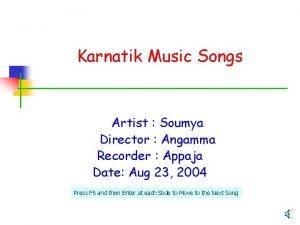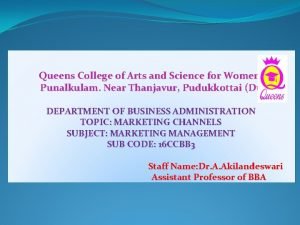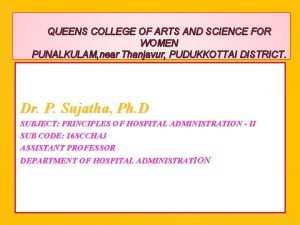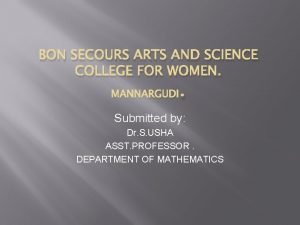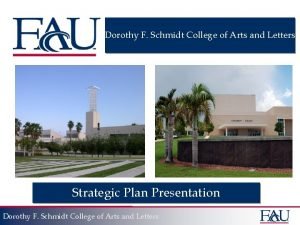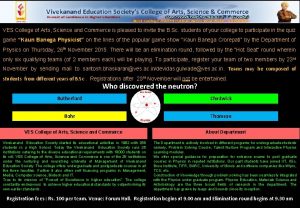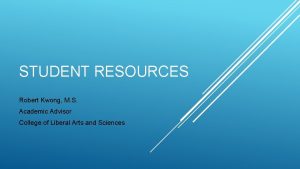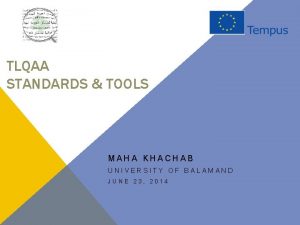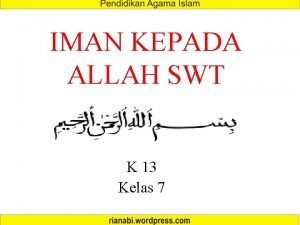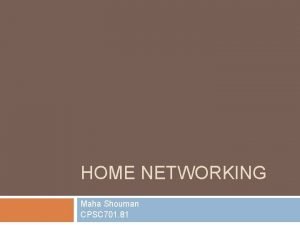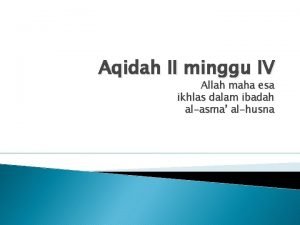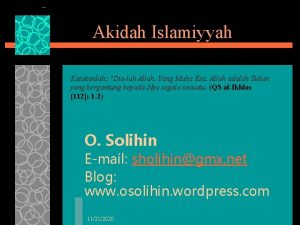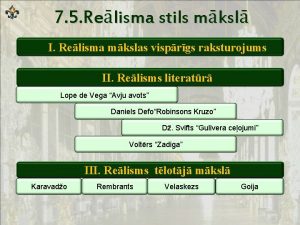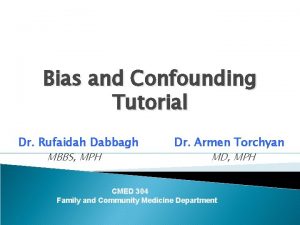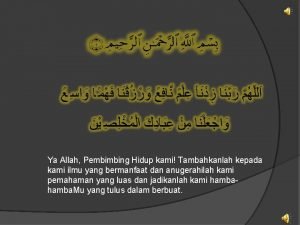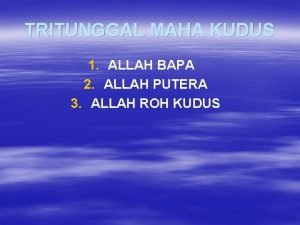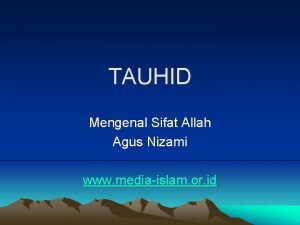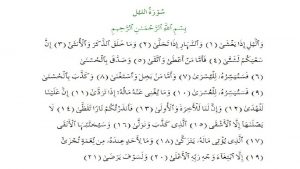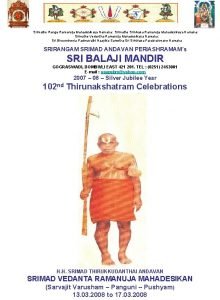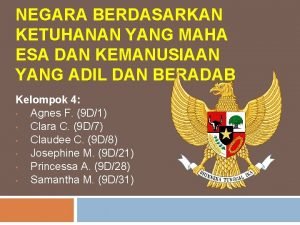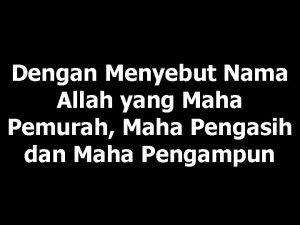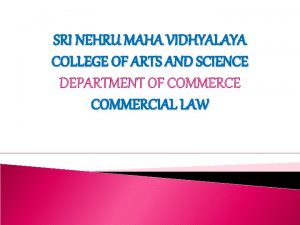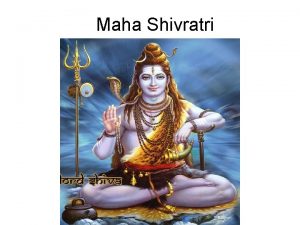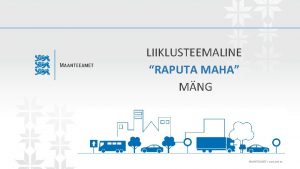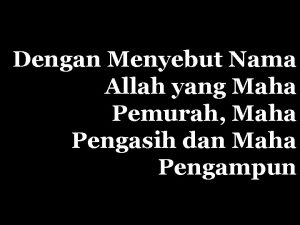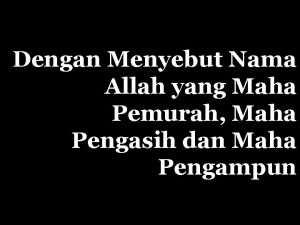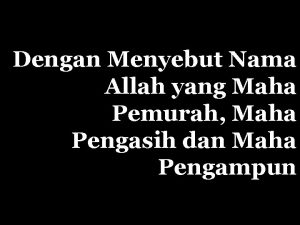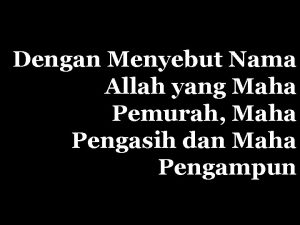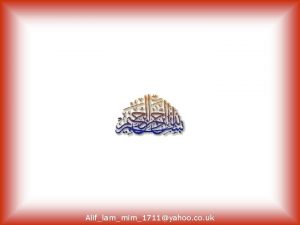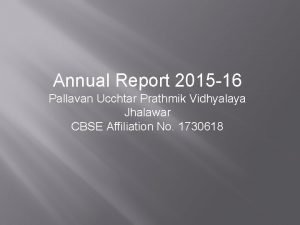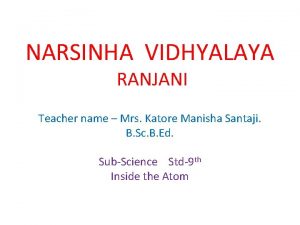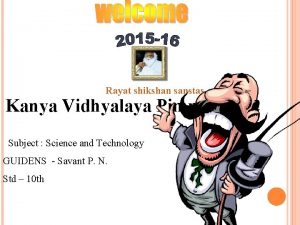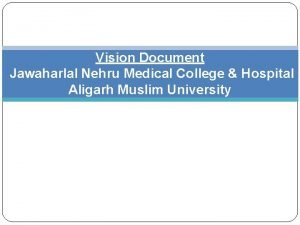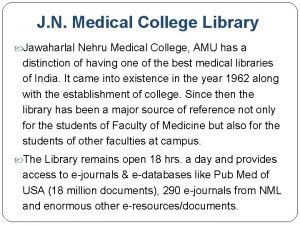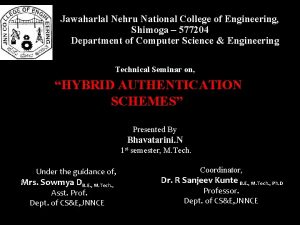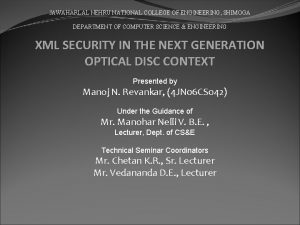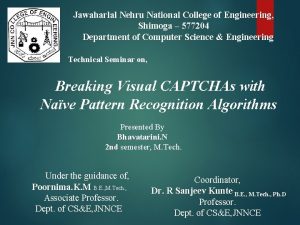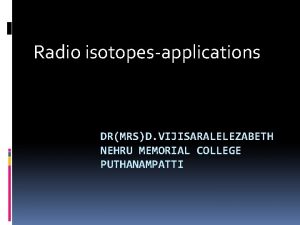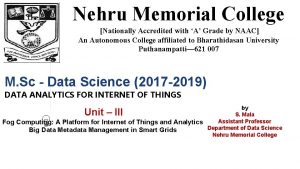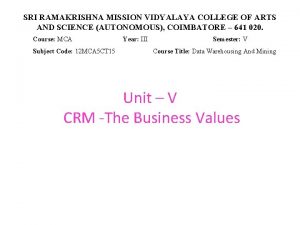SRI NEHRU MAHA VIDHYALAYA COLLEGE OF ARTS AND







































- Slides: 39

SRI NEHRU MAHA VIDHYALAYA COLLEGE OF ARTS AND SCIENCE Department of Commerce COMPUTER APPLICATION IN BUSINESS CLASS SEMESTER UNIT II TERM FACULTY 1 : : : B. COM (B&I) V INTRODUCTION 2018 -2019; ODD SEMESETER G. SIVAGAMI

Introduction To Computers • Definition: • Its an electronic Device that is used for information Processing. • Computer. . Latin word. . compute • Calculation Machine

Introduction To Computers • • • Accepts input, processes data, stores data, and produces output Input refers to whatever is sent to a Computer system Data refers to the symbols that represent facts, objects, and ideas Processing is the way that a computer manipulates data A computer processes data in a device called the central processing unit (CPU)

Introduction To Computers • Memory is an area of a computer that holds data that is waiting to be processed, stored, or output • Storage is the area where data can be left on a permanent basis • Computer output is the result produced by the computer • An output device displays, prints or transmits the results of processing

Introduction To Computers

Introduction To Computers Computer Performs computations and makes logical decisions Millions / billions times faster than human beings Computer programs Sets of instructions for which computer processes data Hardware Physical devices of computer system Software Programs that run on computers

• Definition: • • • Introduction To Computer Software Operating system Problem solving Techniques Computer Prog ramming languages Computer Threats

COMPUTER HARDWARE Computer hardware typically is divided into four categories. They are input devices, processing unit, output devices, and storage media.

COMPUTER HARDWARE �Central Processing Unit - also called “The Chip”, a CPU, a processor, or a microprocessor �Memory (RAM) �Storage Devices �Input Devices �Output Devices

RAM

STORAGE DEVICES

INPUT & OUTPUT DEVICES

First Generation Computers (1940 -1956) � The first computers used vacuum tubes for circuitry and magnetic drums for memory. � They were often enormous and taking up entire room. � First generation computers relied on machine language. � They were very expensive to operate and in addition to using a great deal of electricity, generated a lot of heat, which was often the cause of malfunctions. � The UNIVAC (UNIVersal Automatic Computer) and ENIAC (Electronic Numerical Integrator And Computer) computers are examples of first-generation computing devices.

First generation computers

Second Generation Computers (1956 -1963) • Transistors replaced vacuum tubes and used in the second generation of computers. • Second-generation computers moved from binary machine language to symbolic. • High-level programming languages were also being developed at this time, such as early versions of COBOL and FORTRAN. • These were also the first computers that stored their instructions in their memory.

Second generation computers

Third Generation Computers (1964 -1971) �The development of the integrated circuit was the hallmark of the third generation of computers. �Transistors were miniaturized and placed on siliconchips, called semiconductors. �Instead of punched cards and printouts, users interacted with third generation computers through keyboards and monitors and interfaced with an operating system. �Allowed the device to run many different applications at one time.

Third generation computers

Fourth Generation Computers (1971 -present) �The microprocessor brought the fourth generation of computers, as thousands of integrated circuits were built onto a single silicon chip. �The Intel 4004 chip, developed in 1971, located all the components of the computer. �From the central processing unit and memory to input/output controls—on a single chip. �Fourth generation computers also saw the development of the mouse and handheld devices.

Fourth generation computers

Fifth Generation Computers (present and beyond) �Fifth generation computing devices, based on artificial intelligence. �Are still in development, though there are some applications, such as voice recognition. �The use of parallel processing and superconductors is helping to make artificial intelligence a reality. �The goal of fifth-generation computing is to develop devices that respond to natural language input and are capable of learning and self-organization.

Fifth generation computers

Types of computer Type of computer Digital computer Main frame Computer Micro Computer Home PC Analog computer Super Computer Hybrid Computer Mini Computer

Analog computer measures and answer the questions by the method of “HOW MUCH”. The input data is not a number infect a physical quantity like term, pressure, speed, velocity. �Signals are continuous of (0 to 10 V) �Accuracy 1% Approximately �High speed �Output is continuous �Time is wasted in transmission time

Analog computer

Hybrid computer �Hybrid computers are computers that exhibit features of analog computers and digital computers. �The digital component normally serves as the controller and provides logical and numerical operations, while the analog component often serves as a solver of differential equations and other mathematically complex equations.

Hybrid computer

Digital Computers Digital computer counts and answer the questions by the method of “HOW MANY”. The input data is represented by a number. These are used for the logical and arithmetic operations. �Signals are two level of (0 V or 5 V) �Accuracy unlimited �low speed sequential as well as parallel processing �Output is continuous but obtain when computation is completed.

Micro Computer Micro computer are the smallest computer system. There size range from calculator to desktop size. Its CPU is microprocessor. It also known as Grand child Computer. �Application : - personal computer, Multi user system, offices.

Mini Computer These are also small general purpose system. They are generally more powerful and most useful as compared to micro computer. Mini computer are also known as mid range computer or Child computer. �Application : - Departmental systems, Network Servers, work group system.

Mini computer

Main Frame Computer Mainframe computers are those computers that offer faster processing and greater storage area. The word “main frame” comes from the metal frames. It is also known as Father computer. �Application – Host computer, Central data base server.

Super Computer �Super computer are those computer which are designed for scientific job like whether forecasting and artificial intelligence etc. They are fastest and expensive. A super computer contains a number of CPU which operate in parallel to make it faster. It also known as grand father computer. �Application – whether forecasting, weapons research and development.

Super computer

Classification of Digital computer �Desktop �Workstation �Notebook �Tablet PC �Handheld computer �Smart Phone

workstation

Tablet PC

Handheld PC(PDA)

Computer Architecture CPU Bus RAM Central Processing Unit Input/ Output Devices
 Sri rama sri rama sri manoharama
Sri rama sri rama sri manoharama Nehru report
Nehru report Quaid e azam 14 points
Quaid e azam 14 points Creative arts grade 7 activities term 3
Creative arts grade 7 activities term 3 Queens college
Queens college Queens college of arts and science
Queens college of arts and science Bon secours college mannargudi courses
Bon secours college mannargudi courses Dorothy f schmidt college of arts and letters
Dorothy f schmidt college of arts and letters Ves college of arts science and commerce
Ves college of arts science and commerce College of liberal arts and sciences uf advising
College of liberal arts and sciences uf advising Lahc sis
Lahc sis Ilfracombe arts college
Ilfracombe arts college Mikroanjiopatik hemolitik anemi
Mikroanjiopatik hemolitik anemi Ttp pentad
Ttp pentad Maha khachab
Maha khachab Suci suci suci tuhan maha kuasa
Suci suci suci tuhan maha kuasa Ravana palace in sri lanka location map
Ravana palace in sri lanka location map Bertakwa kepada tuhan yang maha esa
Bertakwa kepada tuhan yang maha esa Maha teguh dan tegar asmaul husna
Maha teguh dan tegar asmaul husna District 6 maha
District 6 maha Al bashir artinya allah maha
Al bashir artinya allah maha Shelterdness
Shelterdness Allah maha ikhlas
Allah maha ikhlas Dialah allah yang maha
Dialah allah yang maha Voltērs
Voltērs Maha diagnosis
Maha diagnosis Maha el keshawi
Maha el keshawi Maha ka matlab
Maha ka matlab Dr maha dabbagh
Dr maha dabbagh Rikob adalah
Rikob adalah Allah maha kudus
Allah maha kudus Allah maha mengetahui
Allah maha mengetahui Dengan nama allah
Dengan nama allah Srinivasa ramanuja
Srinivasa ramanuja Shivani kulkarni
Shivani kulkarni Pengertian iman dengan bahasa arab
Pengertian iman dengan bahasa arab Negara berdasarkan ketuhanan yang maha esa
Negara berdasarkan ketuhanan yang maha esa Peta konsep asmaul husna kelas 7
Peta konsep asmaul husna kelas 7 Dengan nama allah yang maha pemurah
Dengan nama allah yang maha pemurah Food and beverage industry in sri lanka
Food and beverage industry in sri lanka
